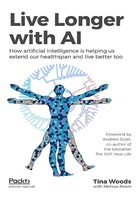
Living forever
All this talk of life assets being reduced to ones and zeros would have been heresy before the 1800s, when most people believed in "vitalism"—the notion that living things were endowed with a magical property that distinguished them from inanimate objects. In religion, vitalism was thought to be responsible for animating the first humans, and also perpetuating the immortal soul.
This vitality—energy of life—is still the subject of so much research today. Scientists are busy trying to understand this life force of cells, and how to unlock the elixir that could keep us going, potentially forever.
Ever since becoming "human," we have sought to understand how we can become immortal—how to bottle up vitality. This is the stuff of ancient myths, Greek legends, and modern literature.
The "Epic of Gilgamesh" is an ancient Mesopotamian poem that tells the story of Gilgamesh, king of the city Uruk, who tragically loses his beloved friend Enkidu—this compels him to find the solution to prevent or overcome old age and death. On his journey, Gilgamesh discovers a flower that can achieve rejuvenation, but in the end doesn't use it. The moral of the story is that the king becomes wiser as a result of his journey and achieves a different kind of peace.
Gilgamesh has survived the ages and is enshrined as a character in popular culture too—as one of the Marvel Avengers with eternal powers including virtual indestructibility, limitless stamina, superhuman strength, and, of course, extreme longevity. But there are many other stories throughout the ages: Herodotus' Fountain of Youth, Rowling's philosopher's stone, Barrie's Neverland, and Ovid's Cumaean Sibyl. The list goes on in the search for eternal youth.
Fast forward to the present day and eternal youth may soon move out of the realms of myth[9] and into reality thanks to developing technologies. Three main technological shifts are driving the innovation in biology and longevity (according to Alex Zhavoronkov, a pioneer in AI and CEO of Insilico Medicine, who I interview in this book):
- DNA sequencing and synthesis: The cost of genetic sequencing has come down to $100 per person (compared to $24,000 only a few years ago[10]), so decoding our DNA is becoming accessible to the masses.
- AI, machine vision, and machine learning is rapidly developing.
- Biological data collection and manipulation in the lab is increasingly automated.
Combining these three applications presents a very powerful tool for AI, which can be categorized in the following ways according to Zhavoronkov[11]:
- Machine learning refers to algorithms that can learn from and make predictions on data.
- Deep learning is a subset of machine learning and is based on neural networks.
- Reinforcement learning (RL) is a method of directing unsupervised machine learning through rewards and penalties.
- Generative adversarial networks (GANs) are structured, probabilistic models for generating data and consist of two entities—the generator and the denominator. The denominator checks the authenticity of the data produced by the generator, whereas the generator tries to trick the denominator—it's kind of like learning to lie without getting caught.
- Transfer learning is a machine learning method where the set of learned features of a model for a specific task is reused, or repurposed.
The applications of these tools within the field of aging research[12] offer tremendous opportunities.